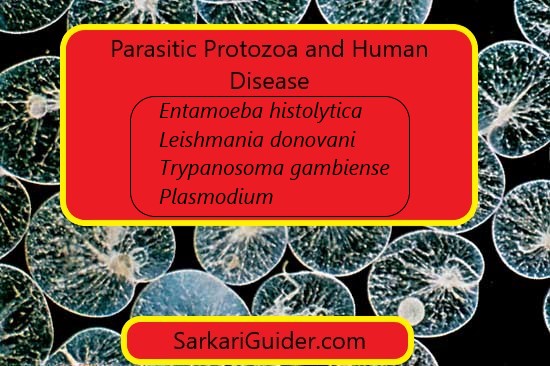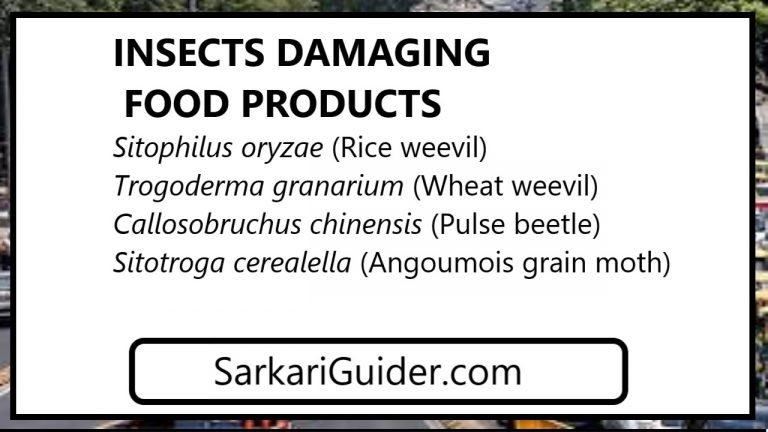Parasitic Protozoa and Human Disease

Parasitic Protozoa and Human Disease
Parasitic Protozoa and Human Disease – Parasitism constitutes one of the most important interactions of the living world which has wide variations in degree and in impact on the host. A successful parasite has capability to maintain a state of equilibrium with the host, so that no significant damage is caused which affects the life patterns of the host. A number of protozoans are parasite on human beings, cause serious diseases two men and his domesticated animals also.
Phylum- Protozoa
Sub-phylum- Plasmodroma
Class- Sarcodina
Order- Amoebina
Genus- Entamoeba
Species- histolytica
Entamoeba histolytica is cosmopolitan in distribution, commonly found in epidemic form in tropical and sub-tropical regions. It causes disease amoebiasis or amoebic dysentery in humans which is seen in the form of discharge of blood and mucus in the stool. It is unicellular trophozoite which inhabits the lower portion of small and large intestine of man. The protoplasm is not completed differentiated into ecto- and endoplasm and it contains food vacuoles.
The mode of transmission of this parasite is is through faecal contamination of drinking water and raw vegetables are contamination by infected and careless food handling.
No intermediate host is involved in the life cycle of this parasite. The transmission of parasite from man to man takes place through tetranucleate cysts. These cysts when come out with faecal matter, contaminated food and water. When man drinks water or eat food containing cysts, the parasite reaches the host. Housefly is the common vector for spreading of this parasite.
Prevention and Control
- Quick and proper disposal of human feces should be made.
- The green vegetables should be washed properly before cooking to ensure that vegetable is free from cysts.
- The irrigation of green vegetable with probable contaminated water should be checked.
- Chiniofon is an anti-amoebic compound which is administered orally and may be taken in in aqua solution for more effective action.
- Diodoquin is used in killing the amoebic trophozoites in lumen and wall of intestine and is given orally.
- Carbarsone is effective in extra intestinal amoebiasis.
-
Leishmania donovani
Phylum- Protozoa
Sub-phylum- Plasmodroma
Class- Mastigophora
Order- Protomonadina
Genus- Leishmania
Species- donovani
These species causes the disease Kala-Azar or visceral leishmaniasis.
The vector of this species is sand-fly (Phlebotomus argentipes). In this disease irregular fever, weakness, headache and changed number of blood cells have been noticed. The spleen is also enlarged.
Prevention and Control
- Destruction of sand fly can greatly reduce the amount of visceral leishmaniasis.
- Treatment by good nursing care, enriched diet and even blood transfusion is important in severe cases of infection.
- Sulfa drugs and antibiotics has greatly reduced the hazards.
- Antimonials and diamidines are the types of two drugs given in the treatment of Kala-azar.
-
Trypanosoma gambiense
Phylum- Protozoa
Sub-phylum- Plasmodroma
Class- Mastigophora
Order- Protomonadina
Genus- Trypanosoma
Species- gambiense
It is a flagellate parasite of human blood. Vector of the disease is Tse-Tse fly. Distributed in almost all territories which have low marshy land. It multiplies by binary fission in the blood stream of man. Just after inoculation of parasite, an interstitial inflammation occurs in the skin of human beings. It causes the disease sleeping sickness in man. It is a fatal disease which can cause death of patient due to acute febrile attack. Patient sleeps in between the tasks so as the name of disease.
Prevention and Control
- Protection from the bite of tse-tse fly by use of net or by covering exposed body parts.
- Quaratine of persons coming from infected to uninfected territory.
- Campaigns to destroy the resting and breeding grounds to tse tse fly.
- Mass treatment of people with curative drugs accompanied by tse-tse fly.
- Drugs like tryparsamide and compounds arsenicals, suramine, sodium and dimidine are most effective for treatment.
Phylum- Protozoa
Sub-phylum- Plasmodroma
Class- Sporozoa
Order- Haemosporidia
Genus- Plasmodium
Plasmodium causes disease malaria in human beings. Four species of Plasmodium are reported to cause different types of malaria in human beings which are P. vivax, P. ovale, P. malariae and P. falciparum. Malaria is transmitted through the bite of female Anopheles mosquito. Man is the primary host while mosquito is the secondary for intermediate host. In human beings, Plasmodium attach the RBC and liver cells and releases a toxic substance called haemozoin which causes malaria.
There are four recognized forms of Malaria which are caused by different species of Plasmodium.
- Tertian malaria- It is caused by P. vivax in which fever is repeated every third day.
- Ovale malaria- Caused by P. ovale in this also fever is repeated every third day.
- Quartan malaria- Caused by P. malariae and in this fever is repeated every fourth day.
- Malignant malaria- Caused by P. falciparum in which fever is repeated every second day. It is fatal to patient.
Prevention and Control
- Treatment of human infections- Primaquine is effective in terminating exo-erythrocytic infection and hence gametocyte production.
- Measure against adult mosquitoes- adequate screening of houses and use of mosquito nets to protect human beings against mosquito bite and use of mosquito repellents on exposed parts of body.
- Measures against Mosquito breeding- Elimination of standing water from pools, ponds , swampy areas etc. Introduction of Gambusia fish may control larvae development by feeding upon the larva. Lavicidal control is universally applicable technique to reduce mosquitoes.
Treatment
Some of the anti-malarial drugs are:
- Cinchona products- Quinine is given to destroy asexual parasites in circulating RBC.
- Acridine compounds like Quinacrine is effective in falciparum infection.
- Aminoquinolines like Chloroquine is lethal to asexual stages of Plasmodium in circulating red blood cells.
- 8-Aminoquinolines like Primaquine sterilises the gametocytes of falciparum malaria.
- Primidine compounds like Daraprim when administered in suppressive doses, quickens the action of the drug in all the species of malarial parasites.
| संज्ञानात्मक नक्शा, मानसिक नक्शा या मानसिक मॉडल Cognitive Map |
गतिक संतुलन संकल्पना Dynamic Equilibrium concept
भूमण्डलीय ऊष्मन( Global Warming)|भूमंडलीय ऊष्मन द्वारा उत्पन्न समस्याएँ|भूमंडलीय ऊष्मन के कारक
प्राचीन भारतीय राजनीति की प्रमुख विशेषताएँ
Disclaimer: sarkariguider.com केवल शिक्षा के उद्देश्य और शिक्षा क्षेत्र के लिए बनाई गयी है | हम सिर्फ Internet पर पहले से उपलब्ध Link और Material provide करते है| यदि किसी भी तरह यह कानून का उल्लंघन करता है या कोई समस्या है तो Please हमे Mail करे- sarkariguider@gmail.com




I mսst thank you for the efforts you have put in writing this bl᧐g.
I’m hoping to see the same high-grade blog posts frоm you later
οn as well. In truth, your crеative writing abilities
has motіvated me to get my very own website now 😉